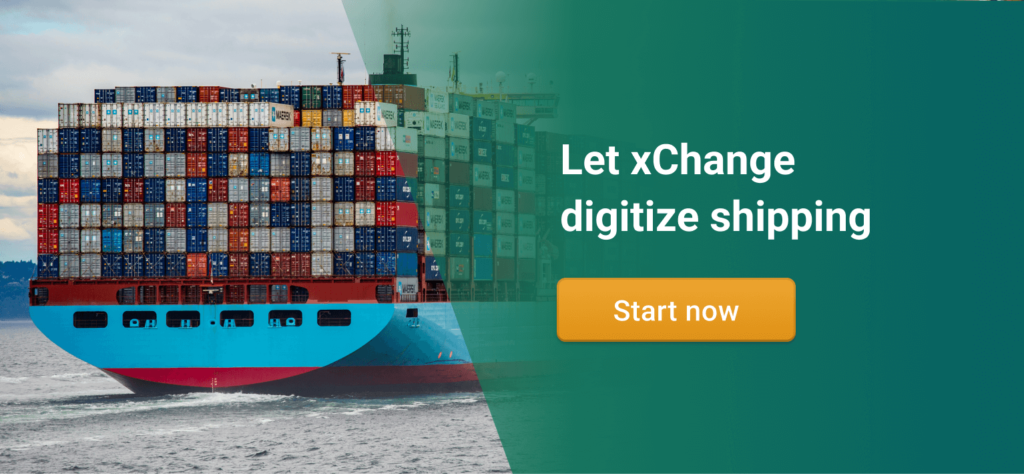Mega container ships are changing our ports. In this blog, we discuss whether these ships are here to solve the industry’s problems or hamper the global supply chain.
In this blog, you’ll learn:
-
- Mega container ships are large ships that have capacities of around 20,000 TEUs or more.
- These ships have benefits like high freight volume and low fuel costs.
- But they also have massive port infrastructure demands and insurability risks.
- As an industry, shipping has reached saturation when it comes to mega-ships.
- But with SOCs, you still have hope of successful savings on shipping. With xChange, you can find SOCs for your cargo easily. To find out more click on the button below.
Start now
The shipping industry you’re a part of is responsible for 90% of the global trade. It has over 50,000 merchant ships running on the high seas. Yet, finding a slot for your container on a vessel is a difficult exercise. Could mega container ships be an answer?
Mega container ships are the largest vessels ever built. Their size may resolve some shipping issues, but they add costs and adjustments to the global supply chain. At some point, we need to weigh the benefits of mega container ships against the costs. And measure how they’re affecting our ports.
Before we discuss this further, let’s check out this video.
Mega container ships decoded
To begin with there’re seven major types of container ships in service to ship your cargo. In ascending order, they are:
- Small Feeder – Up to 1,000 TEUs,
- Feeder – 1,001 to 2,000 TEUs,
- Feedermax – 2,001 to 3,000 TEUs,
- Panamax – 3,001 to 5,100 TEUs,
- Post-Panamax – 5,101 to 10,000 TEUs,
- New Panamax (or Neo Panamax) – 10,000 to 14,500 TEUs, and
- Ultra Large Container Vessel (ULCV) – 14,501 and higher TEUs.
The mega container ships come in the ULCV category.
What are mega container ships?
The term mega container ships or mega-ships came up around 2013, with the Triple E series of ships by Maersk. They’re capable of moving 18,340 TEUs. The ten largest mega container ships in the world have capacities of over 20,000 TEUs. It’s easy to think that mega container ships are the answer to your container availability issue. But it is not that simple.
Before you deal with finding your cargo slot on mega-ships, you need containers. And, with xChange, you can find SOCs in 2500+ locations. SOCs are shipper-owned containers that you can source on your own. That’s crucial for locations where other carriers won’t or can’t provide boxes at good rates. You can read about them here.
xChange is a neutral marketplace that is home to 1000+ members worldwide. It makes finding SOCs easy and your shipping smooth. To see how easy it is to find SOC, fill in your details in the xChange’s leasing search below.
Which are the largest mega container ships in 2022?
Here’s a list of the largest mega container ships in 2022 (in descending order of their TEUs capacities):
1. Ever Ace – 23,992 TEUs
2. HMM Algeciras – 23,964 TEUs
3. HMM Oslo – 23,792 TEUs
4. MSC Gulsun – 23,756 TEUs
5. MSC Mina – 23,656 TEUs
6. CMA CGM Jacques Saadé – 23,000 TEUs
7. OOCL Hong Kong – 21,413 TEUs
8. COSCO Shipping Universe – 21,237 TEUs
9. CMA CGM Antoine De Saint Exupery – 20,954 TEUs
10. Madrid Maersk – + 20,000 TEUs
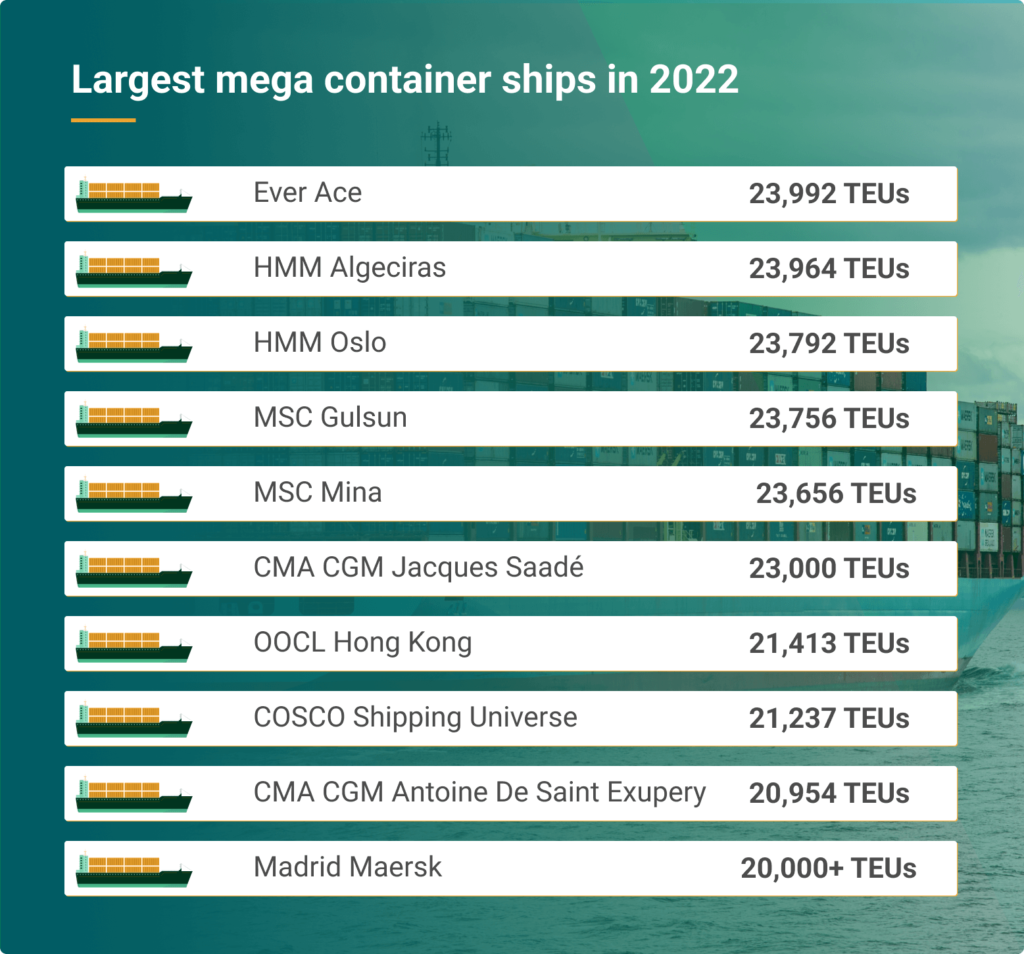
Benefits of using mega container ships
High oil prices and low-interest rates between 2004 and 2014 resulted in the arrival of mega container ships. Since then, they’ve facilitated global trade in the following manners:
Increasing freight volume
Mega container ships are a great option when it comes to freight volume per ship. Each of the top ten mega-ships can carry over 20,000 TEUs. And the largest can transport 23,992 TEUs. With that kind of capacity, these ships could solve the container crisis.
Transport costs
Doubling the ship size has reduced total vessel costs per transported container by roughly a third. Compared to a 16,000 TEU vessel, a mega-ship with 19,000 TEU would save close to 1 million USD. That means, by transporting your cargo on mega container ships the shipping cost will be reduced by about $ 50 per slot, annually.
Fuel consumption
Mega container ships conserve fuel. This is because your fuel consumption changes according to your vessel’s speed. And these ships work with slow steaming. A vessel that travels twice as fast will consume eight times as much fuel.
Fuel expense
Fuel cost makes up 60% of a vessel’s operating cost. Mega container ships consume less fuel on a voyage than 16,000 TEU vessels saving a lot of fuel money.
The shipping industry is subject to a lot of forces that can delay your cargo. How many times have your cargo shipments been delayed because of no container availability? Well, now is the time for you to digitize your shipping. Click on the banner below to begin.

Cost savings of mega container ships: The reality
When we talk of making money in container shipping, mega-ships do help. Until they don’t. In this section, we’ll find out what the reality is and the reasons behind it.
The current situation with mega container ships
The reality is that bigger isn’t always better. Cost savings are decreasing with the increasing size of mega container ships. The savings of the newest generation of mega-ships are four to six times smaller than those from previous rounds.
Reasons behind the decreasing cost savings
How money is made in sipping is complex and depends on a lot of things. Such as your requirements, shipping delays, and surcharges – any of these things could change your profits. When it comes to mega container ships, here’re the reasons behind their decreasing cost savings:
Freight volume
While the cost savings are quite high when a ship gets upsized to 5,000 TEUs. But beyond that capacity, they’re much smaller. So mega-ships don’t save.
Utilization rate
With mega-ships, their rate of utilization is a big issue. For a mega container ship to achieve cost savings, the rate of utilization should be at least 91%. That’s very difficult to achieve even for high-volume trade routes.
Number of sailings
The number of sailings is less for a mega-ship. The reason is because of the two strategies that carriers came up with in order to fill their ships:
- low freight rates, and
- a hub-and-spoke system copied from airlines.
These strategies have led to a decrease in profit per slot because the shipping schedules have consolidated into fewer sailings per week. These sailings happen from only the main ports in Asia and Europe. Containers for other destinations get transshipped either on a feeder’s vessel or by another transport mode.
Are you interested in saving on shipping costs? Is container availability hampering your profits? With xChange, you get to solve your container crisis by becoming a part of a digital and neutral marketplace. To get a demo on how to save up on demurrage and detention charges, and smoothen your shipping experience, click on the banner below.

What are the disadvantages of mega container ships?
While the benefits of mega-ships exist, the risks that they pose to the supply chain are many as well. In this section, we’ll look into a few of them.
Insurability
There’re concerns about the insurability of mega-ships. Insurers are worried about the costs of potential salvage in case of accidents. For example, if a mega-ship sinks or develops mechanical problems.
Insurer Allianz has already issued a warning that the industry must prepare for losses of about $1 to $2 billion in case of a collision between two vessels. Remember the mega container ship Ever Given that got stuck in Egypt? Yes, you don’t want that happening again, do you?
Service and cargo concentration
Mega container ships have a lot of cargo. Often, ports struggle to handle it. It leads to service and cargo concentration, in turn disrupting the port’s workflow.
Supply chain resilience
A supply chain model that can avoid or resist disruption and recover from it quickly is called a resilient supply chain. In shipping, a single operational interruption can impact many different areas of the supply chain. The massive logistics and resources that go into tending to these ships make them a risk to the supply chain resilience.
 Impact of mega container ships on ports
Impact of mega container ships on ports
Mega-ships are a stress on the existing ports. Let’s find out how they impact these ports in the following ways:
Infrastructure demands
The reality is that ports are struggling to keep pace. Some are investing billions in renovations to fit in mega-ships. While others do not have enough space to do so. Currently, only 20 ports can accommodate a ship of 19,000 TEU. Mega container ships need larger equipment and area. In addition to larger container gantry cranes and storage yards, they also need better inland distribution.
Port congestion
A typical call at port for mega-ships can last for between 36 and 60 hours. In addition, to the long calls and services that get diverted to these ships, ports end up facing a lot of congestion because of them.
Peak time
There’re only a few mega-ships, but they have a higher number of containers. So, the port peak times are rising, putting a lot of pressure on the ports. To resolve this, more infrastructure and resources are required. Not to mention, a lot more manpower. Port staff must work closely together to avoid long turnaround times, congestion, and high demurrage and other surcharges.
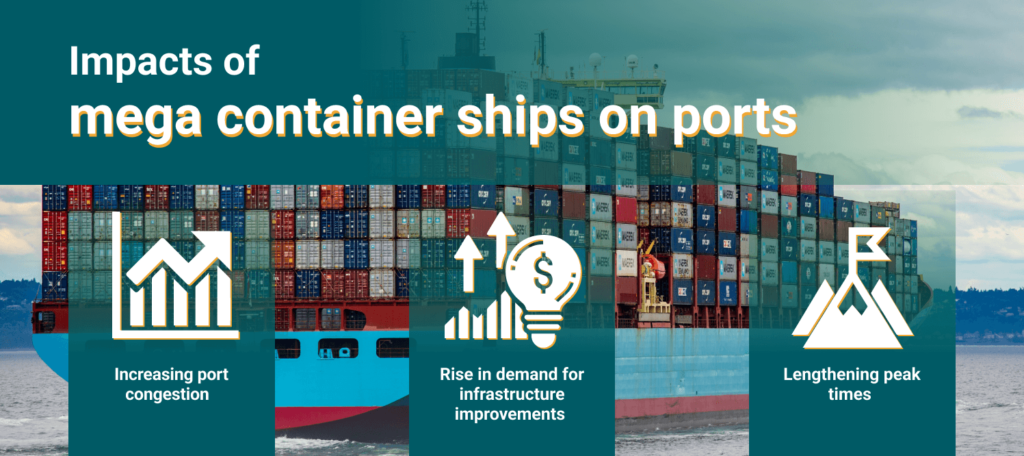
Is bigger always better?
So, bigger isn’t necessarily better. As far as mega-ships are concerned, we might’ve reached a peak. Increasing the size or capacity per vessel will lead to congestion and high density at ports. This will lead to an increase in port congestion charges. Plus, any accident could cost the shipping industry a lot of money and damage the supply chain resilience.
So, increasing the vessel capacity isn’t always the solution. How can you then still save on your shipping? Simple, through SOCs. With them, you can avoid demurrage and detention because you don’t have to move the containers from and back to the carrier within a fixed time frame. You have to take loading time, customs clearance, drayage, port congestion, etc. into account when planning your shipment. Demurrage and detention charges can easily pile up to huge amounts a day.
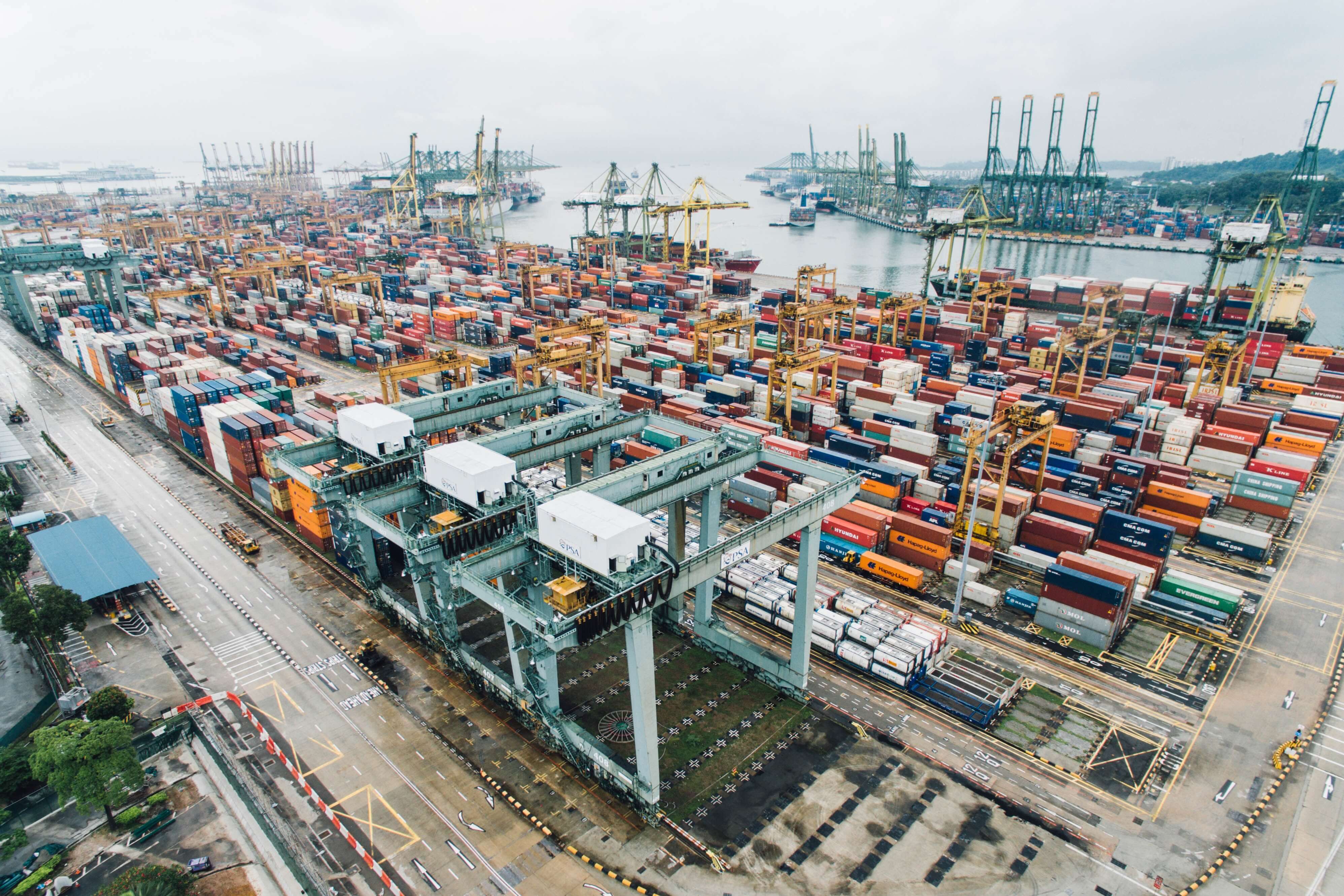
Adapting to a changing market
Now, for you as a shipper, there’s a big question. How do you ship your cargo? The shipping industry is constantly evolving. Even a small event can have an impact on the whole supply chain. And easily affect your cargo shipping. One solution is digitizing your shipping.
When you do that with xChange., you can use SOCs via xChange marketplace and use SOCs that are available globally. This’ll even help your savings as most of the time, you find SOCs free of charge. Click on the banner below to start.
Mega container ships: FAQs
How many mega container ships are there?
The number of mega container ships working today is about 5,461. Their combined capacity of about 24.6 million TEUs (as of August 2021).
What is the largest container ship in the world?
The Ever Ace is the largest container ship in the world. The ship is 400m-long (1,300ft) and has a capacity of 23,992 containers.
How big are the mega ships?
Mega container ships are among the biggest moving objects humans ever made. The mega container ship, Ever Given, is a quarter of a mile long (roughly the length of four football pitches).


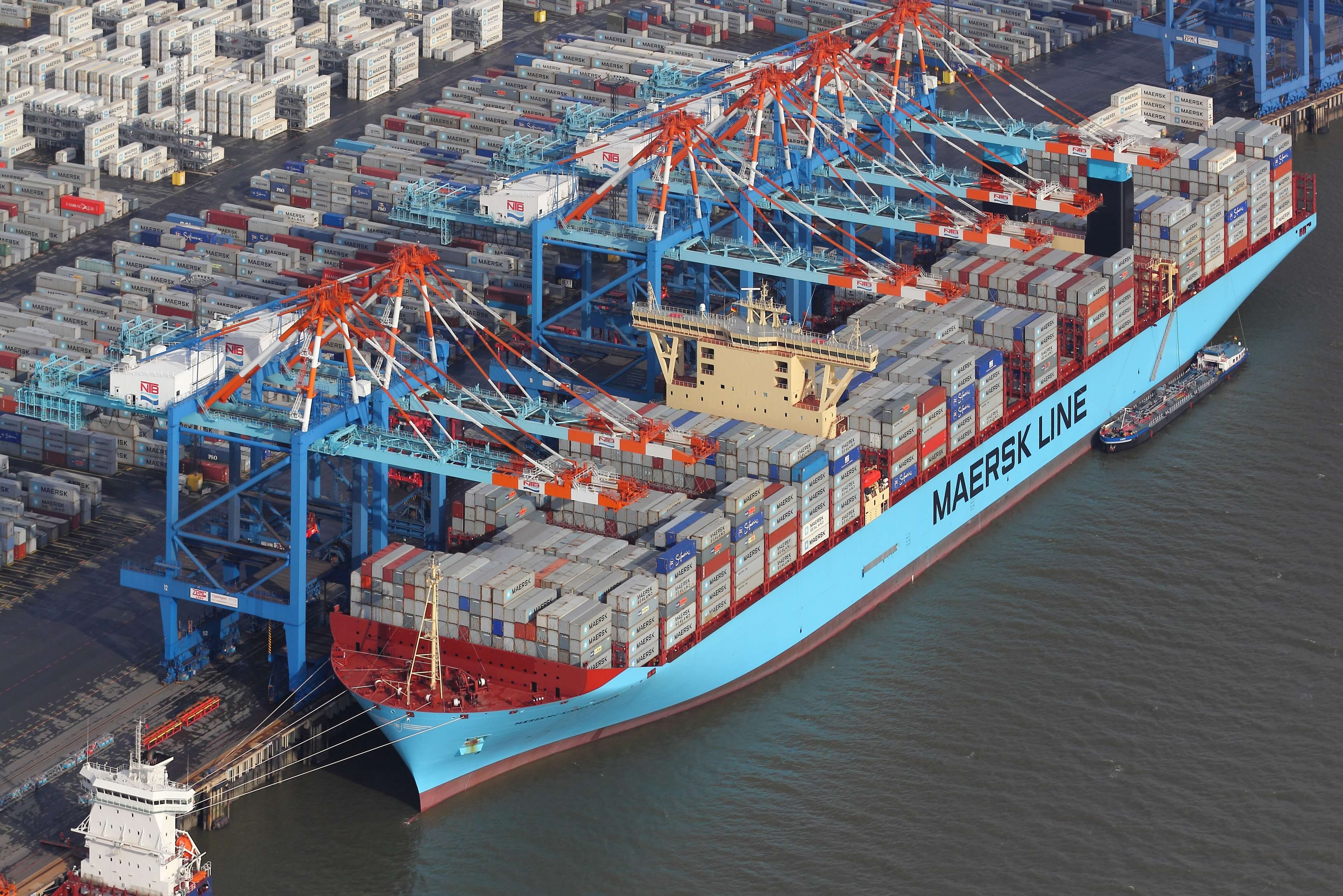 Impact of mega container ships on ports
Impact of mega container ships on ports